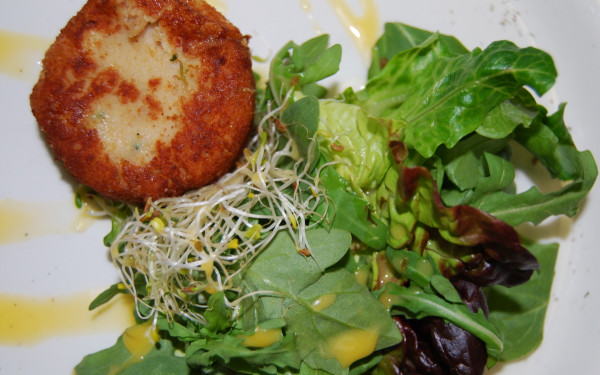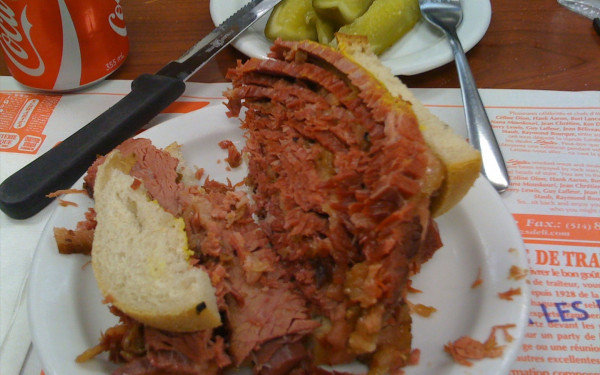Fringe Food
Plus qu’un aliment
What’s in a bite of cheese? Biodiversity, economic sustainability, artistry and pleasure, according to Léa Lehmann.
Lehmann grew up in Switzerland and Lac St-Jean amidst a family that has been making cheese for four generations.
“The more complex the taste, the more people ask questions, the more opportunity for discussing where—for example—the cows or sheep grazed, what they ate,” she said.
After finding herself in Montreal five years ago, Lehmann hoped to find a way to perpetuate her lifelong bond with artisanal cheesemaking. She was surprised, she said, to find a near-endless supply of enthusiasm for artisanal production and local food here in the big city.
“Sure it’s still the case that food is simply a necessity. We visit the store, put food in our basket, go home and eat and that’s that,” she says. “But here in Montreal there is also a real hunger for local products, for having personal relationships with producers.”
It was this observation that sparked her recent gastronomical experiment: Sur un plateau. The service, whose name plays off the word in French for cheese platter (plateau de fromages), is both nutritive and educational.
Rather than opening up a store, Lehmann chose to act as an independent informant, using her deep roots with small-scale provincial producers to construct stimulating plates of rare Quebec cheeses—many of which are impossible to find anywhere else in the city.
“Producers are often dispersed throughout the regions of Quebec, and don’t have the opportunity to come visit Montreal very often. I serve as a link between these producers and the consumers, who are usually centred in cities”
Lehmann says that small-scale cheesemakers are gradually beginning to give the industrial producers a run for their money in the province, and it’s happened quickly. Outside of Quebec’s widespread production of cheddar, her family’s small Fromagerie Lehmann was—just 10 years ago—one of the province’s lone family-run dairy operations to also manufacture its own special cheese. Now, she says, there are upwards of 15 such independent farms in the Lac-St-Jean region alone.
While she regularly creates cheese discovery platters for organizations as diverse as L’Université du Québec à Montréal and Équiterre, Lehmann says her services often go far beyond “just delivery.”
Her passion lies in accompanying the tastings with lectures and in leading discussions. To this end, she has also begun offering workshops for anyone interested in learning more about cheese craftsmanship, bio-diverse cheeses, and the practice of tasting (which, to hear her talk, seems just as accomplished an art as wine-tasting).
“Though the cheese plate is not as deeply embedded in the culture here as it is in France,” she says, “it’s nonetheless very important for Montrealers. Cheese tasting is about learning the story of a particular place, about these incredible family businesses that often provide direct and indirect employment to a whole rural area.”
So what kind of fromago-innovations should we look out for in the next few years?
“Hard crust” cheeses, such as Europe’s famous gruyère and compté, are apparently in the works here in Quebec, and Lehmann says that new varieties of sheep and goat cheese continue to be popular.
“Cheese is more than just an aliment,” she says. “To have a good cheese you need good milk, and to have good milk it means your cows, goats or sheep need to be well fed—it’s really a whole chain that starts in the soil. If the soil is well-cultivated, then the animals are in good health, and you end up with something with a higher quality, both gastronomically and for your health. For me, this is what artisanal cheese is all about”
To learn more about the importance of artisanal cheese to the province’s health, environment and economy, check out Lehmann’s website —courses, events and cheese suggestions are featured throughout.



2webedit_600_375_90_s_c1.jpg)


_600_375_90_s_c1.jpg)